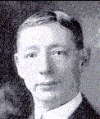Homoeopathy is no system for any man to espouse who has not the ability to do his own thinking. What every homoeopath needs is the ability to think for himself; to observe; to take the case; to find the similimum; to know how to prescribe; to know when to repeat; to know just what constitutes a cure, a palliation or a suppression; and a uniform set of tools with which to accomplish the end in view.
We used to bemoan the fact that we did not even possess a high school diploma; that we had but a two year of six months each medical education and that we started out under the most severe handicap that could befall any man, but out later years have revealed the wisdom of all this. It is taught us to do our thinking. Our mental jug was not filled up with useless knowledge or as Elbert Hubbard would have said, “Things that are not so.” This ability to think has enabled us to grasp and get out of homoeopathy the results that seem to have seen denied those whose education appears to have been on a higher plane, which as the late Dr. Hale would say, “sheds no lustre on the higher education”.
Every homoeopath needs to be the most acute of observers. This is one of his most essentials, for it aids him to gain for his case taking and prescription many things that would otherwise be missed and thereby spoil his prescription, thus bringing about his failure and thereby causing both himself and his patient to question the efficacy of homoeopathy.
Every homoeopath needs to know “how to take the case” for this is the most important part of all his work. The case properly taken taken is two-thirds cured. Dr. Kent taught this and his method is taught by The Foundation for Homoeopathy and it is the mandatory duty of every man or woman who professes homoeopathy to go to that Foundation and learn how, if he or she does not know.
Every homoeopath needs to know how to find the remedy and to this end he needs the proper tools, of which he will speak later.
Every homoeopath needs to know how to prescribe and to this end he must have a knowledge of the Organon, the Philosophy of Homoeopathy and a working knowledge of the Materia Medica and how to use the Repertory, and the proper potency to produce a cure.
Every homoeopath needs to know just what constitutes a cure; just what the term cure means from a strictly homoeopathic standpoint; the difference between a cure, a relief or a palliation.
Every homoeopath needs a uniform set of tools with which to accomplish the end in view and here is what we are about to suggest:
The one reason, we believe, that there is so much diversion and dissension in the homoeopathic ranks is that we have so many materia medicas abridged, individual and unreliable so that Dr. Jones, with a reliable materia medica gets results, which Dr. Smith, with an abridged or unreliable materia medica fails to get, hence Dr. Jones is an enthusiastic homoeopath while Dr. Smith resorts to pan-therapy and says homoeopathy is all right for some things, but it covers but a limited territory. If Dr. Smiths argument is true, how does he account for our success with it without the resort to other means?.
Now, if we are to have harmony in the homoeopathic ranks by getting uniform results, we must have uniform tools. These tools must emanate from the same factory. The opinions entering into the formation of these tools must not be merely individual opinions but tested truths verified and verifiable. To this end we would make the following suggestions:
That the Foundation for Homoeopathy at Washington be made the “tool factory” from which all tools used by homoeopaths should come.
That this “factory” should take from all the materia medicas all that is good and embody it into one standard, reliable materia medica in loose-leaf form with a revised yearly appendix.
That it should take all the repertories and combine all the good qualities of each into one standard repertory; retaining, amplifying and perfecting Fields mechanical repertory.
That Dr. Stuart Close should, as a member of the Foundation, take his own most admirable Philosophy and Kents and weave them into one.
That all monographs on the various diseases submit their therapeutic hints to the Foundation to be assured that such therapeutic hints are reliable. Only in this way can we be assured of success and uniform results.
That a firm like Boericke & Tafel, which has had unusual experience in the publication of strictly homoeopathic works, should do the publishing. That these works should be sold to the physician by the Foundation at cost.
That every homoeopathic physician should become a subscriber to and a supporter of the Foundation.
And, lastly, every homoeopath needs reliable remedies. No one can get results out of cheap goods.

